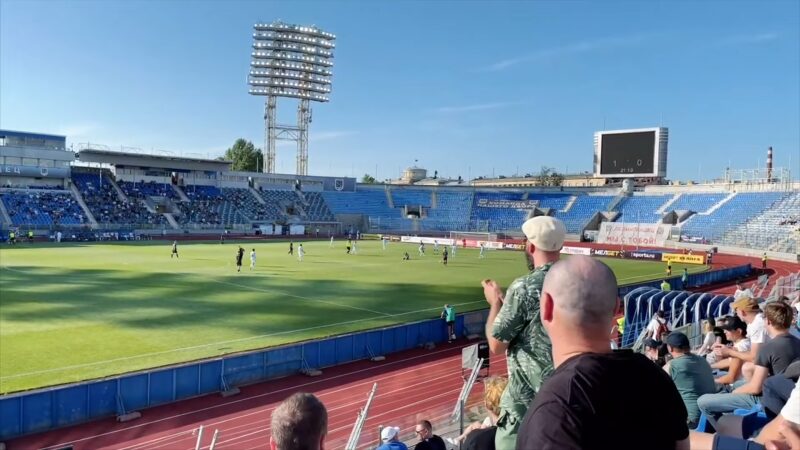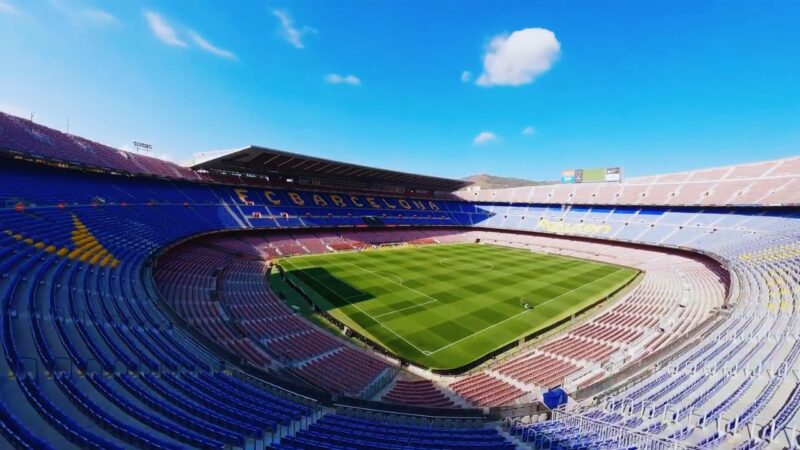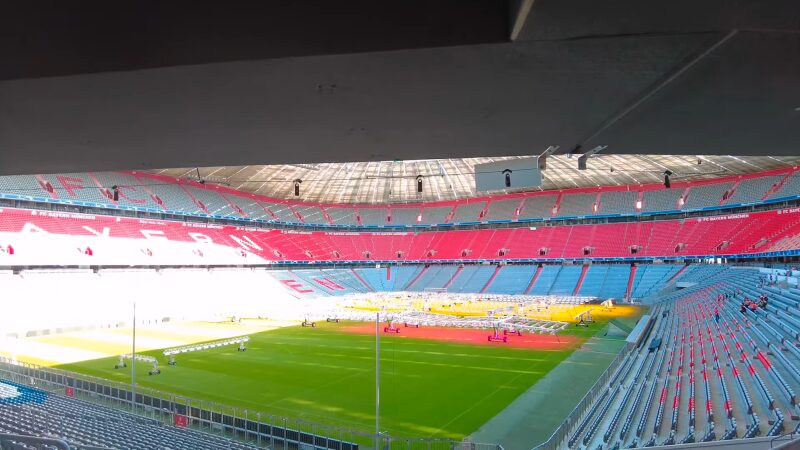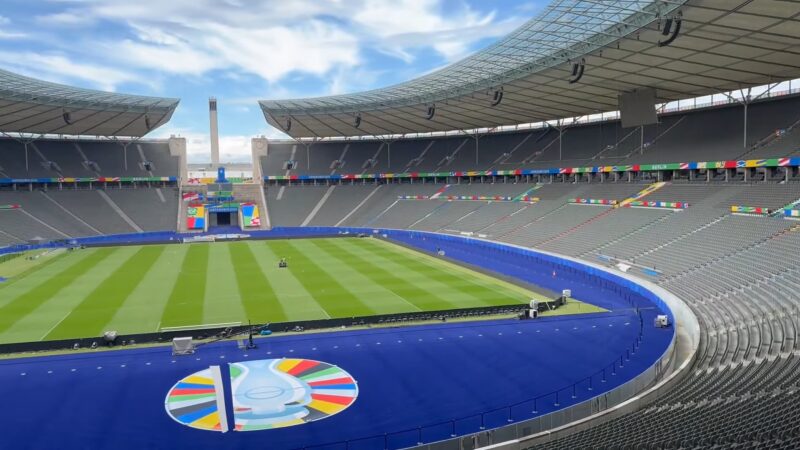Europe boasts some of the world’s most iconic and expansive sports venues.
These massive stadiums serve as cathedrals of sport, hosting thrilling football matches and other major events that captivate millions of fans.
These colossal venues are primarily used for football, though some also host rugby matches, concerts, and other large-scale events.
The list includes stadiums from countries like Spain, England, Germany, and France, reflecting the widespread passion for sports across the continent.
While some of these stadiums have stood for decades, others are more recent constructions or have undergone significant renovations to increase capacity and improve amenities.
The Camp Nou in Barcelona tops the list with a capacity of 99,354, making it not only the largest stadium in Europe but also one of the biggest in the world.
Rankings
| Stadium | City | Country | Capacity | |
|---|---|---|---|---|
| 71 | Kazan Arena | Kazan | Russia | 45,000 |
| 70 | Otkritie Arena | Moscow | Russia | 45,360 |
| 69 | Fisht Olympic Stadium | Sochi | Russia | 47,659 |
| 68 | Parc des Princes | Paris | France | 48,527 |
| 67 | HDI Arena | Hanover | Germany | 49,000 |
| 66 | Stadium of Light | Sunderland | England | 49,000 |
| 65 | Fritz-Walter-Stadion | Kaiserslautern | Germany | 49,780 |
| 64 | Stade Pierre Mauroy | Lille | France | 50,000 |
| 63 | RheinEnergieStadion | Cologne | Germany | 50,000 |
| 62 | Stadion Nurnberg | Nuremberg | Germany | 50,000 |
| 61 | Friends Arena | Stockholm | Sweden | 50,000 |
| 60 | Aviva Stadium | Dublin | Ireland | 50,000 |
| 59 | Estadio Jose Alvalade | Lisbon | Portugal | 50,049 |
| 58 | Stade Roi Baudouin | Brussels | Belgium | 50,093 |
| 57 | Estadio do Dragao | Porto | Portugal | 50,431 |
| 56 | Sukru Saracoglu Stadium | Istanbul | Turkey | 50,530 |
| 55 | Ernst Happel Stadion | Vienna | Austria | 50,865 |
| 54 | Ibrox Stadium | Glasgow | Scotland | 51,082 |
| 53 | De Kuip | Rotterdam | Netherlands | 51,177 |
| 52 | Izmir Ataturk Stadium | Izmir | Turkey | 51,295 |
| 51 | Commerzbank-Arena | Frankfurt | Germany | 51,500 |
| 50 | Hampden Park | Glasgow | Scotland | 52,000 |
| 49 | Donbas Arena | Donetsk | Ukraine | 52,187 |
| 48 | St. James Park | Newcastle | England | 52,339 |
| 47 | Turk Telekom Arena | Istanbul | Turkey | 52,650 |
| 46 | Stadion Rajko Mitic | Belgrade | Serbia | 53,000 |
| 45 | Estadio San Mames | Bilbao | Spain | 53,000 |
| 44 | Amsterdam ArenA | Amsterdam | Netherlands | 53,748 |
| 43 | Hrazdan Stadium | Yerevan | Armenia | 53,849 |
| 42 | Borussia-Park | Monchengladbach | Germany | 54,010 |
| 41 | Anfield | Liverpool | England | 54,074 |
| 40 | Boris Paichadze Dinamo Arena | Tbilisi | Georgia | 54,139 |
| 39 | Stadion Slaski | Chorzow | Poland | 54,378 |
| 38 | ESPRIT arena | Dusseldorf | Germany | 54,600 |
| 37 | Etihad Stadium | Manchester | England | 55,000 |
| 36 | Estadio de Mestalla | Valencia | Spain | 55,000 |
| 35 | Arena Nationala | Bucharest | Romania | 55,634 |
| 34 | Volksparkstadion | Hamburg | Germany | 57,000 |
| 33 | PGE Narodowy | Warsaw | Poland | 58,145 |
| 32 | Stadio San Nicola | Bari | Italy | 58,270 |
| 31 | Parc Olympique Lyonnais | Lyon | France | 59,186 |
| 30 | London Stadium | London | England | 60,000 |
| 29 | Estadio La Cartuja de Sevilla | Seville | Spain | 60,000 |
| 28 | Stadio San Paolo | Naples | Italy | 60,240 |
| 27 | Emirates Stadium | London | England | 60,361 |
| 26 | Mercedes-Benz-Arena | Stuttgart | Germany | 60,441 |
| 25 | Celtic Park | Glasgow | Scotland | 60,500 |
| 24 | Estadio Benito Villamarin | Seville | Spain | 60,720 |
| 23 | VELTINS-Arena | Gelsenkirchen | Germany | 61,637 |
| 22 | Tottenham Hotspur Stadium | London | England | 62,303 |
| 21 | Estadio da Luz | Lisbon | Portugal | 64,400 |
| 20 | Stade Velodrome | Marseille | France | 67,000 |
| 19 | Puskas Arena | Budapest | Hungary | 67,155 |
| 18 | Saint Petersburg Stadium | St. Petersburg | Russia | 68,000 |
| 17 | Wanda Metropolitano | Madrid | Spain | 68,000 |
| 16 | Baku Olympic Stadium | Baku | Azerbaijan | 68,700 |
| 15 | OAKA Stadium | Athens | Greece | 69,918 |
| 14 | NSC Olimpiyskiy | Kiev | Ukraine | 70,050 |
| 13 | Olympiastadion Berlin | Berlin | Germany | 74,475 |
| 12 | Allianz Arena | Munich | Germany | 75,000 |
| 11 | Old Trafford | Berlin | Germany | 75,840 |
| 10 | Atatürk Olympic Stadium | Munich | Germany | 76,092 |
| 9 | Stade de France | Manchester | England | 79,338 |
| 8 | San Siro | Istanbul | Turkey | 80,018 |
| 7 | Luzhinki | Moscow | Russia | 81,000 |
| 6 | Estadio Santiago Bernabéu | Madrid | Spain | 81,044 |
| 5 | Signal Iduna Park | Dortmund | Germany | 81,365 |
| 4 | Twickenham | London | England | 82,000 |
| 3 | Croke Park | Dublin | Ireland | 82,300 |
| 2 | Wembley Stadium | London | England | 90,000 |
| 1 | Camp Nou | Barcelona | Spain | 99,354 |
2. Wembley Stadium
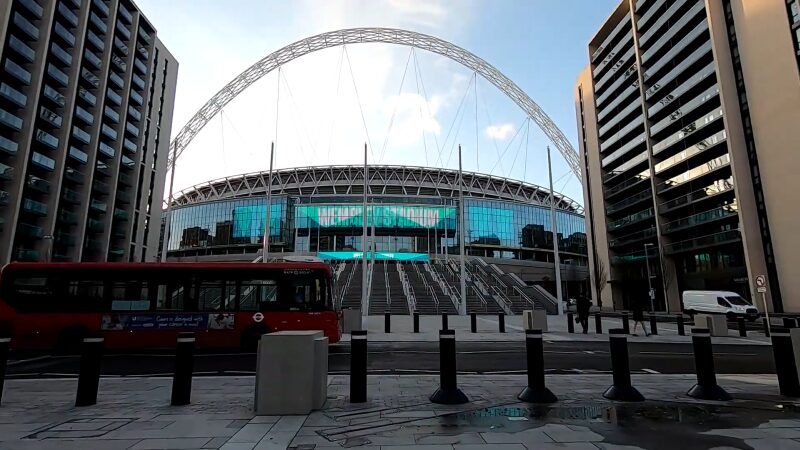
Wembley Stadium in London, England, holds the distinction of being the second-largest stadium in Europe. With a seating capacity of 90,000, it’s a true colossus in the sporting world.
Rebuilt on the site of the original Wembley, the new stadium opened in 2007. Its iconic arch, visible across London, serves both as a structural element and a symbol of modern engineering.
Wembley hosts England’s national football team matches and major cup finals. It’s also a premier venue for concerts and other sporting events, making it a versatile and sought-after location.
3. Croke Park
Croke Park, located in Dublin, Ireland, is one of Europe’s largest and most historic stadiums, with a seating capacity of 82,300.
The stadium serves as the principal venue for Gaelic games, including the annual All-Ireland finals in Gaelic football and hurling, making it a cornerstone of Irish sporting culture.
Construction of Croke Park began in 1880 and was completed in 1884, making it one of the oldest stadiums in continuous use in Europe.
Over the years, Croke Park has undergone several renovations and expansions to accommodate the growing popularity of Gaelic games and other events.
4. Twickenham Stadium

Twickenham Stadium, with a seating capacity of 82,000, is located in Southwest London, England. Construction of this iconic venue began in 1908 and was completed in 1909. Twickenham is the largest stadium in the world dedicated solely to rugby union and serves as the home of England Rugby.
Situated in a culturally vibrant area, Twickenham is not just a sports venue but a centerpiece of the community, surrounded by a variety of entertainment options and facilities. Over the years, the stadium has undergone numerous renovations and expansions to enhance the spectator experience, making it a world-class destination for rugby fans.
In addition to hosting international rugby matches, including the Six Nations Championship and the Rugby World Cup, Twickenham Stadium is also a popular venue for concerts and other large-scale events. Its rich history and modern amenities make it a must-visit location for sports enthusiasts and visitors alike.
5. Signal Iduna Park
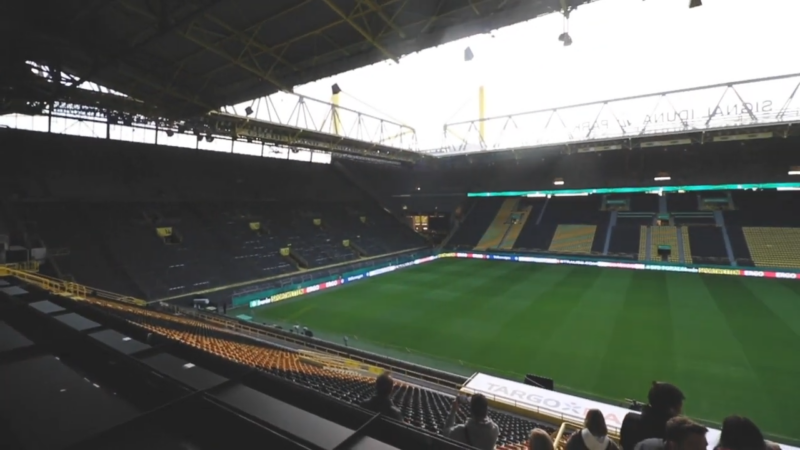
Home to Borussia Dortmund, Signal Iduna Park in Dortmund, Germany, can seat 81,365 spectators for domestic matches. This makes it the largest stadium in Germany.
The stadium is renowned for its “Yellow Wall,” the largest free-standing terrace in European football. This section alone can hold 25,000 standing spectators, creating an intimidating atmosphere for visiting teams.
Signal Iduna Park has hosted matches in the 1974 and 2006 FIFA World Cups. Its passionate crowds and intense atmosphere make it one of Europe’s most revered football venues.
6. Estadio Santiago Bernabéu
The home of Real Madrid, Estadio Santiago Bernabéu in Madrid, Spain, has a capacity of 81,044. It’s currently undergoing extensive renovations to modernize its facilities.
The stadium’s planned improvements include a retractable roof and a 360-degree video scoreboard. These upgrades aim to enhance the fan experience and increase the venue’s versatility.
Bernabéu has hosted four European Cup/UEFA Champions League finals. Its rich history and Real Madrid’s global popularity make it one of the most famous stadiums in world football.
7. Luzhniki Stadium
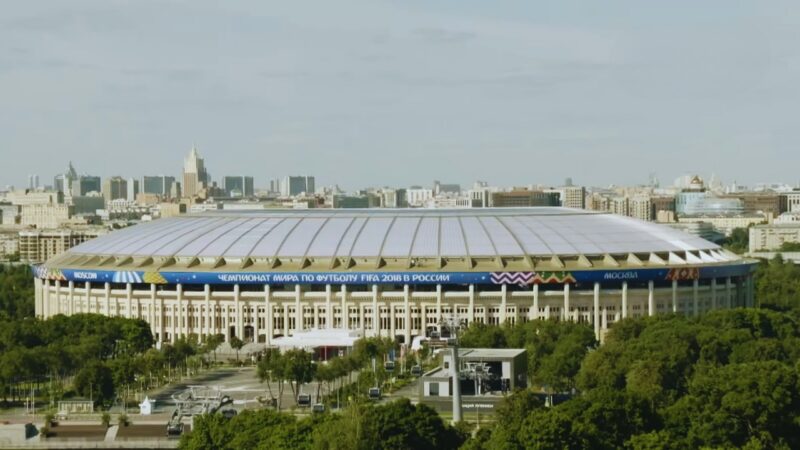
Located in Moscow, Russia, the Luzhniki Stadium stands as a monument to sporting excellence. With a capacity of 81,000 spectators, it ranks among Europe’s largest stadiums.
The stadium has undergone significant renovations, most recently for the 2018 FIFA World Cup. Its modern design incorporates state-of-the-art facilities while preserving its historical facade.
Luzhniki has hosted numerous high-profile events, including the 1980 Summer Olympics and the 2008 UEFA Champions League Final. The venue’s versatility allows it to accommodate various sports and entertainment events.
8. San Siro
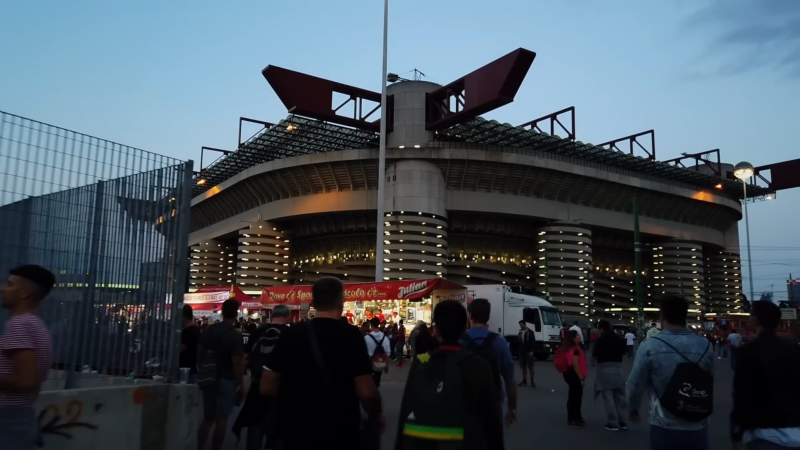
Officially named Giuseppe Meazza Stadium, San Siro in Milan, Italy, has a capacity of 80,018. It’s home to two of Italy’s most storied football clubs: AC Milan and Inter Milan.
Built-in 1926, the stadium has undergone several renovations. Its most distinctive feature is the 11 spiral ramps that lead spectators to the upper tiers.
San Siro has hosted four European Cup/UEFA Champions League finals. Its atmosphere during Milan derbies is legendary, making it one of Europe’s most revered football venues.
9. Stade de France
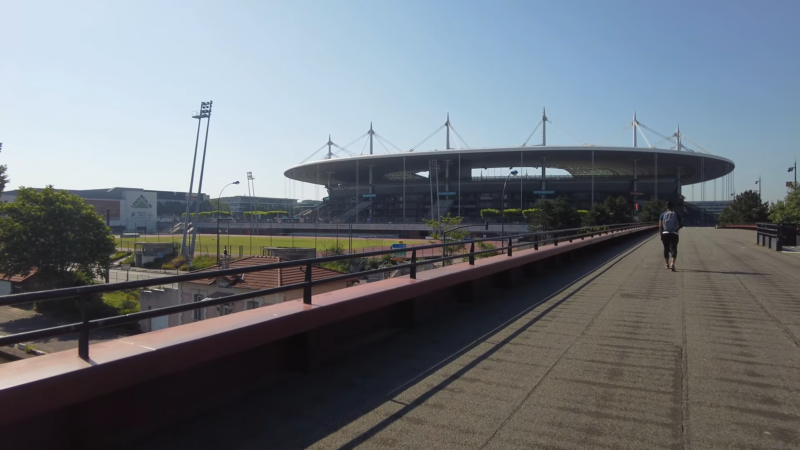
The Stade de France in Saint-Denis, near Paris, can accommodate 79,338 spectators. Built for the 1998 FIFA World Cup, it remains France’s national stadium.
Its unique design features a movable stand, allowing it to switch between configurations for different events. This flexibility makes it suitable for both football and rugby matches.
The stadium has hosted numerous high-profile events, including the UEFA Euro 2016 final and the 2003 World Athletics Championships. It will also play a central role in the 2024 Summer Olympics.
10. Atatürk Olympic Stadium
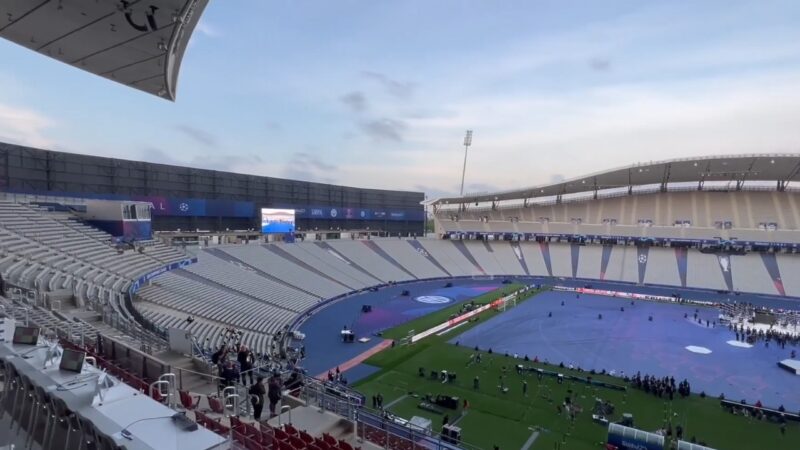
Located in Istanbul, Turkey, the Atatürk Olympic Stadium can seat 76,092 spectators. It’s the largest stadium in Turkey and a key venue for international events.
Named after Mustafa Kemal Atatürk, the founder of the Turkish Republic, the stadium opened in 2002. It features a distinctive elliptical shape and a partially covered seating area.
The stadium has hosted several high-profile matches, including the 2005 UEFA Champions League Final. It’s slated to host the 2023 UEFA Champions League Final, further cementing its status as a world-class venue.

